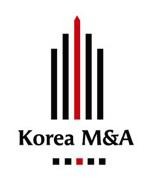| 일 | 월 | 화 | 수 | 목 | 금 | 토 |
|---|---|---|---|---|---|---|
| 1 | ||||||
| 2 | 3 | 4 | 5 | 6 | 7 | 8 |
| 9 | 10 | 11 | 12 | 13 | 14 | 15 |
| 16 | 17 | 18 | 19 | 20 | 21 | 22 |
| 23 | 24 | 25 | 26 | 27 | 28 |
- nda
- PEF
- Acquistion
- Japan Tobacco
- hong kong
- Korea
- capital gate
- China
- China Construction Bank
- M&A
- Letter of intent
- OTCBB
- taiwan
- Investment
- LOI
- cgi korea
- Bank
- Confidential Agreement
- Merger
- Japan
- LOTTE
- case study
- acquisition
- securities
- Malaysia
- sk
- Korea M&A
- private equity
- CA
- buyout
- Today
- Total
Korea M&A Corporation
The Sarbanes-Oxley Act of 2002 (Pub. L. No. 107-204, 116 Stat. 745, also known as the Public Company Accounting Reform and Investor Protection Act of 2002 and commonly called SOX or SarbOx; July 30, 2002) is a United States federal law passed in response to a number of major corporate and accounting scandals involving prominent companies in the United States. These scandals resulted in a decline..
SUMMARY OF SIGNIFICANT DIFFERENCES BETWEEN KOREAN GAAP AND U.S. GAAP In many respects, Korean GAAP are substantially the same as U.S. GAAP. However, there are certain significant differences between Korean GAAP and U.S. GAAP which are summarized below. This summary should not be taken as exhaustive of all Korean/U.S. GAAP differences. No attempt has been made to identify all disclosure, presenta..
